19 Educators We’re Thankful We Met in 2019: Meet the Inspiring Classroom Heroes We Couldn’t Stop Raving About This Year
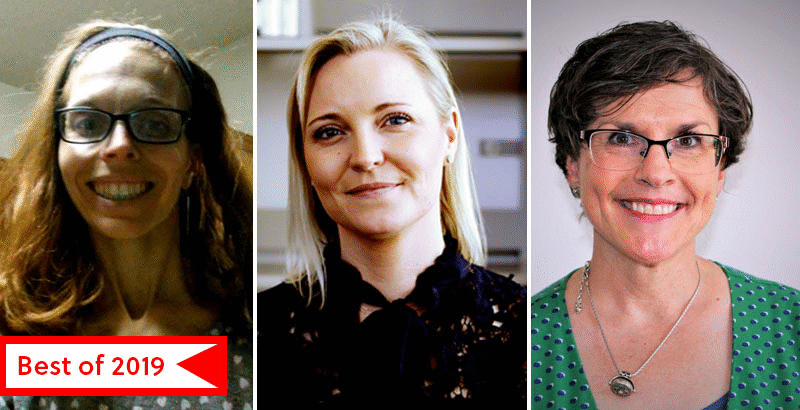
Throughout this eventful year, we at The 74 have been inspired by the talented, dedicated, caring teachers we’ve had the privilege of writing about. There’s the Colorado math instructor who became a foster father to a student so the boy could get a kidney transplant. A mentor-mentee pair in the South Bronx with a year-long focus on improving performance, both among students and at the front of the classroom. Three survivors of the Columbine High School massacre who, as teachers, have borne witness to the grim transformation of their schools, spurred by gun violence. A Teacher of the Year who helps his students at a Virginia juvenile justice center reclaim their lives even as he teaches history.
We’re thrilled to report on inspiring classroom stories each and every week (get the latest dose of good news delivered straight to your inbox by signing up for The 74 Newsletter). And with schools set to close this week as the country gives thanks, we thought we’d also set aside a day to pay tribute to the teachers who had us cheering this year. Here are 19 educators we’re so thankful to have met in 2019:
Ohio’s Barb Fisher, and a Lifesaving Class Lesson: Barb Fisher has been teaching elementary school for 12 years, so she knows a good lesson when she sees one. Still, until this year, she had never delivered a lesson that literally saved a child’s life.
First-grader Zhiouli Wilson, 6, became trapped in a basement during a fire in her family’s Akron home in May. If not for Fisher, the little girl might never have made it out. (Read more about the incredible true story)
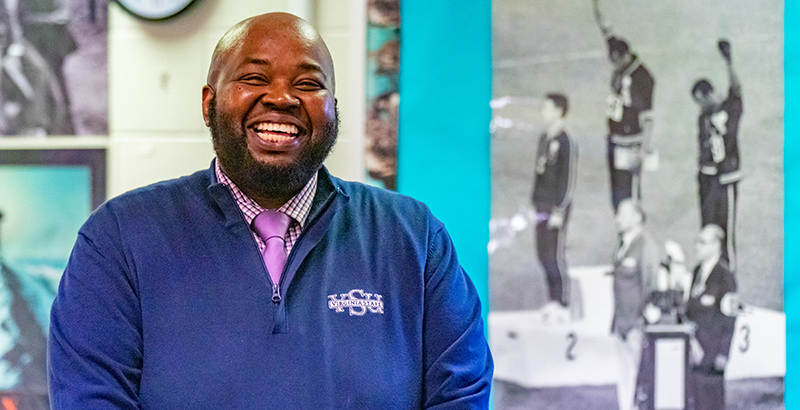
Virginia’s Rodney Robinson, and His Fight For Criminal Justice Reform: The National Teacher of the Year for 2019 is Rodney Robinson, a history teacher in a juvenile detention center in Richmond. Robinson planned to use his new platform to highlight issues like equitable school funding and increasing the number of teachers of color. He also wanted to include the sorts of young offenders he teaches in ongoing bipartisan work around criminal justice reform. “They’re just kids. They’ve made mistakes, and America is a country of second chances. We just want to make sure they have a quality education to take full advantage of their second chance,” he said. (Read more about Robinson and his mission)
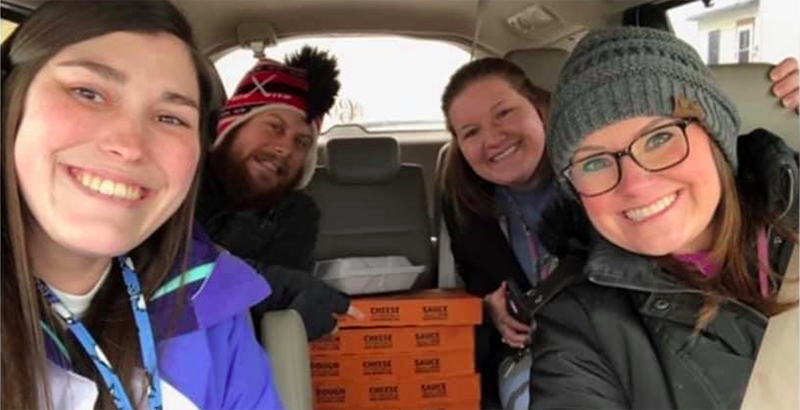
Kentucky’s Mary Byard and the Faculty of Shelby County West Middle School, for Their Inspiring Food Delivery: In Shelby County, virtually every student in kindergarten through seventh grade gets free breakfast and lunch at school. So when back-to-back snow days kept the children at Shelby County West Middle School home, their teachers realized that the students ran a real risk of going hungry. So they loaded up their cars and delivered food to more than 40 children and their families at home. (Read more about the Shelby County teachers’ missions of mercy)
Virginia’s Vohn Lewis, and an Unforgettable Graduation Gift: Fifth-grade graduation was just about to start at Richmond’s George Mason Elementary School when substitute teacher Vohn Lewis heard a commotion. A soon-to-be graduate had broken his shoe just before he was to walk across the stage. Guidance counselor Natalie Battle and the art teacher were scrambling to figure out how to fix it, but Lewis asked what size the child wore. When he learned that he and the boy wore the same size, he gave the student the shoes off his own feet so he could walk across the stage proudly and get his diploma. (Read more about Lewis and his timely rescue)
Colorado’s Lindsay Agbalokwu, and Her Special Delivery: When Denver reading teacher Lindsay Agbalokwu felt minor cramps one morning before school, she brushed them off and headed to work. After all, the baby wasn’t due for a couple more weeks, and her students needed her. But there’s such a thing as being too conscientious. After giving out “core value” awards during morning assembly, she went to her homeroom, where the contractions started again. She asked co-teacher Marissa Kast to notify the principal and dean, who helped Agbalokwu outside while Kast ran to get her car. But there was no slowing down the 8-pound, 6-ounce baby girl who was rushing her way into the world. Making it to the hospital was out of the question, so Kast threw a sleeping bag on the sidewalk. Soon, with the aid of Principal Natalie Lewis, Dean Chris Earls and some firefighters who showed up at the last moment, baby Zara was born. (Read more about Agbalokwu and her unforgettable special delivery)
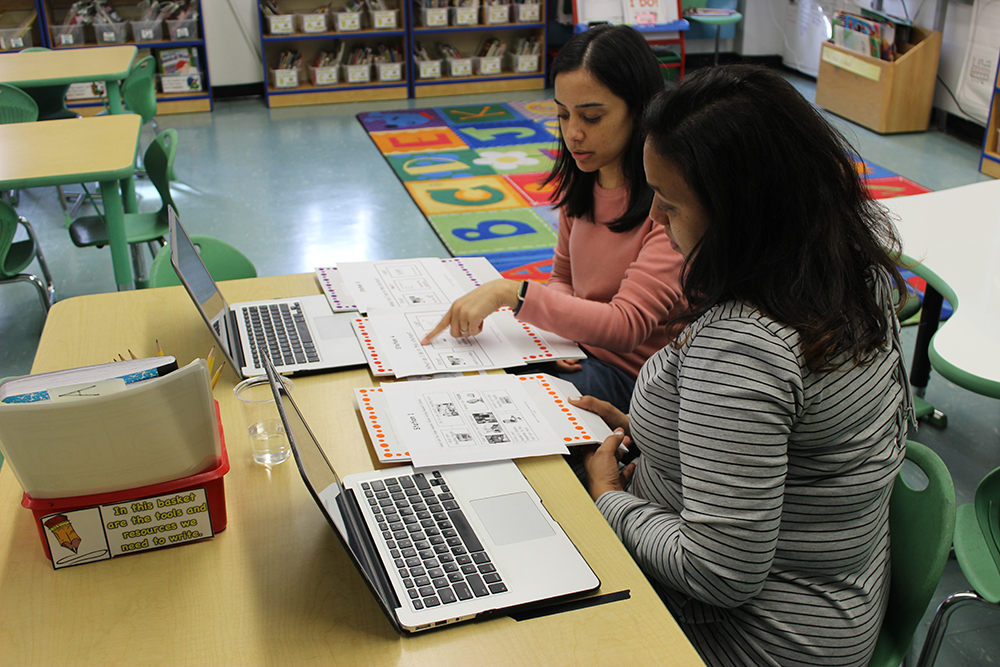
New York’s Elisa Espinal and Ambar Quinones, and Their Year-Long Partnership: Elisa Espinal had wanted to work with young children since she was a kid. But the school in Brooklyn where she was teaching wasn’t preparing her to be the best she could be. So she transferred to Concourse Village Elementary School in the South Bronx, and as a kindergarten teacher new to this rigorous, high-needs school, Espinal was assigned a mentor, fifth-grade teacher Ambar Quinones. Mentoring programs are among the most common methods of support for new teachers in the U.S., but they vary widely in terms of quality; teachers with the least experience are often placed with the students who need the most help, which, in the long run, can be a disservice to both the teacher and the children. The program Espinal and Quinones are participants in, New Teacher Center, is among the largest and most researched in the country, having impacted 250,000 new teachers, mentors and coaches over the past 20 years. To understand what a rigorous, in-depth mentoring program looks like, and the effect it can have on teachers — and student learning — Kate Stringer spent a full academic year shadowing Espinal and Quinones at their school, watching their professional relationship grow as they devised strategies for dealing with an ever-changing set of challenges. (Read more about Espinal, Quinones and the value of mentorships)
Texas’s Shannon Grimm, and a Stylish Act of Kindness: Five-year-old Prisilla Perez had suddenly gotten quiet in kindergarten class. She didn’t want to come to school or take her hat off when she got there. Her teacher, Shannon Grimm, realized something was wrong and soon learned that Prisilla was being bullied and called a boy by the other students because of her short hair. So Grimm — whose own hair flowed down to her waist — picked up scissors and got herself a pixie cut to support Prisilla. (Read more about Grimm’s compassionate cut)
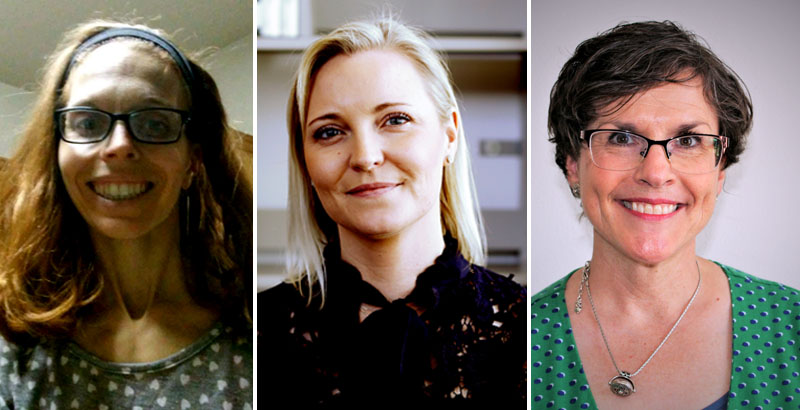
Colorado’s Heather Martin, Michelle Porter and Paula Reed, on How Columbine Changed Everything: The first time teacher Heather Martin experienced a lockdown drill, the traumatic memories from her past resurfaced. As a student close to 20 years ago, she was in the choir room at Columbine High School when two students began one of America’s deadliest mass shootings at a K-12 school, killing 13 people before taking their own lives. In the ensuing years, Martin failed out of college, developed an eating disorder and struggled with paralyzing grief. But somehow, she found herself back at school — this time, at the front of the classroom, and today, she teaches high school English in nearby Aurora, Colorado. Martin is one of three educators who survived the Columbine shooting who spoke to The 74 ahead of the 20th anniversary of the massacre. Two were high school seniors at the time who later became teachers, while a third recently retired from Columbine after more than three decades on the job. Each of their lives was deeply disrupted by the experience, yet they emerged from trauma and grief committed to educating students. (Read more about Martin, Porter and Reed, and how mass school shootings have upended the perception of safety in America’s public schools)
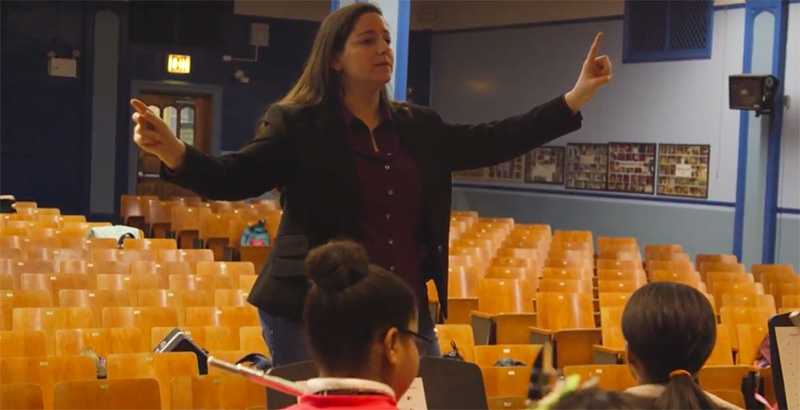
New York’s Melissa Salguero, and the Power of Music Education: Bronx music teacher Melissa Salguero was the only American among 10 finalists for the Global Teacher Prize, selected from more than 10,000 teachers in 39 countries. Salguero started a band program that has improved student attendance and increased student confidence at a school where a majority of students live in poverty. She has raised hundreds of thousands of dollars for instruments to keep the program going. “I will never say no to a kid, I don’t care if the concert’s tomorrow,” she said in her video entry for the contest. “I will have that kid participate in some way.” (Read more about Salguero and her music program)
Florida’s Kelly Cameron, and a Most Unique Wedding Registry: “I call my class ‘my family,’” says Kelly Cameron, a first-grade teacher at Tampa’s Roland Park K-8 Magnet School. “Being a teacher, I know that a lot of kids come with nothing to school.” So, after she and her future husband, Matt Cameron, got engaged in 2018, the couple saw an opportunity to take their good fortune and pay it forward. Instead of listing linens and lingerie on their wedding registry, they filled it with requests for school supplies. Each wedding invitation listed the age and gender of the child for whom the guests would be shopping. (Read more about Cameron and her wedding gift wish list)
Colorado’s Finn Lanning, and a Life-Changing Homecoming: Would you take in a foster child? What if the child had a chronic illness that kept you mostly homebound, required an expensive special diet and required you to skip two days of work each week for doctor appointments? An Aurora math teacher didn’t let those details stop him. When Finn Lanning met 13-year-old Damien at the start of the last school year, he recognized the seventh-grader was someone special. Damien, who has been in foster care for most of his life, needed a kidney transplant and a permanent place to live — every time caring for him became too much for his foster parents and he lost his home, he would be taken off the transplant list. But then, Lanning stepped in, and not only did Damien get back on the list, it seems he has found a forever home. (Read more about Lanning and his compassionate act)
California’s Nicole Tavera, and Her Deep Passion for Science: Nicole Tavera grew up knowing that education was a priority in her family, but she struggled in school, especially with testing. Tavera, now a fifth-grade science teacher at California’s KIPP L.A. Prep, always had to work really hard in school. But it paid off. “I am the first generation to graduate from college [in my family], and I am proud to say not the last. I have younger siblings as well who are on that road. … Education has just been very, very highly important in our family, and so that’s why I chose to become a teacher.” Tavera talks about the importance of making science more fun for her students, her push to rein in the stress of testing that can build upon other stresses in her students’ lives, and her realization that before she teaches her kids physics or chemistry, she must first focus on reading and comprehension skills; many of her incoming students are years behind the curve. “We read, we read, we read. Reading is so important because not only does it help our English language arts teacher, but it also helps me in science.” (Read more about Tavera and her inspiring story)
Washington, D.C.’s Aaron Cuny and Will Stoetzer, and a Breakthrough in Personalized Learning: When Aaron Cuny and Will Stoetzer were deciding to open their own charter school in 2012, they knew two things: They would locate it in the disadvantaged Washington, D.C., neighborhood most in need of high-quality schools, and they would maximize individual teaching time. “For both of us, it came down to teaching in a small group setting, where you could think about how to reach kids individually rather than spending the majority of time and mental energy thinking about classroom management,” Stoetzer said. To do that, Ingenuity Prep is designed around computer-based learning and a heavy use of co-teaching, which then allows educators to break up their classes and maximize the amount of individual attention students receive. Six years later, Ingenuity Prep is delivering stronger results for some of the District’s most at-risk students but now faces a hurdle in its quest to expand. (Read more about Cuny, Stoetzer and Ingenuity Prep)
Florida’s Joanne Miller, and an Anti-Bullying Campaign Driven By Kindness: Want to know the best thing about being kind? It’s contagious. And Joanne Miller, a fourth-grade teacher in Deltona, is out to spread the kindness virus. Every Friday, about 20 students from Miller’s Kindness Squad line up to spread good cheer and welcome the students at Pride Elementary School. But the good works don’t stop at the front door. The squad spreads happiness before school, after school, during lunch and at recess. “We want to start small here in our classroom, and then to the school and then to the community,” Miller says. “One of my biggest goals is to teach kindness in the classroom, and then we will spread it.” It’s also a way to prevent bullying before it starts. (Read more about Miller and her Kindness Squad)
New York’s Eric Albino, and a New Campaign to Rethink the Way We Teach Slavery: Over years of classes, 11th-grader Jeremias Mata had viewed slavery with a certain simplicity and hopelessness — that many black people had once been slaves and that was that. This year, learning about slavery has been different for students at Manhattan’s Facing History School, partly because teachers are incorporating The New York Times’s 1619 Project — a compilation of essays and poetry that re-examines slavery’s legacy 400 years after the first enslaved people arrived in the U.S. from West Africa. The project is helping schools nationwide reframe how slavery is taught in a way that captures its brutality, complexity and influence in shaping America, while also affirming the experience as integral to black Americans’ identity and their contributions to the country. This reframing is “extremely important, especially with the student body that we teach here,” says history teacher Eric Albino. New York City is a predominantly black and Hispanic district that struggles with inequity and segregation. (Read more about Albino and the 1619 Project)
Need more inspiration in your life? Get a weekly dose of good news from schools delivered straight to your inbox by signing up for The 74 Newsletter.
Help fund stories like this. Donate now!

;)